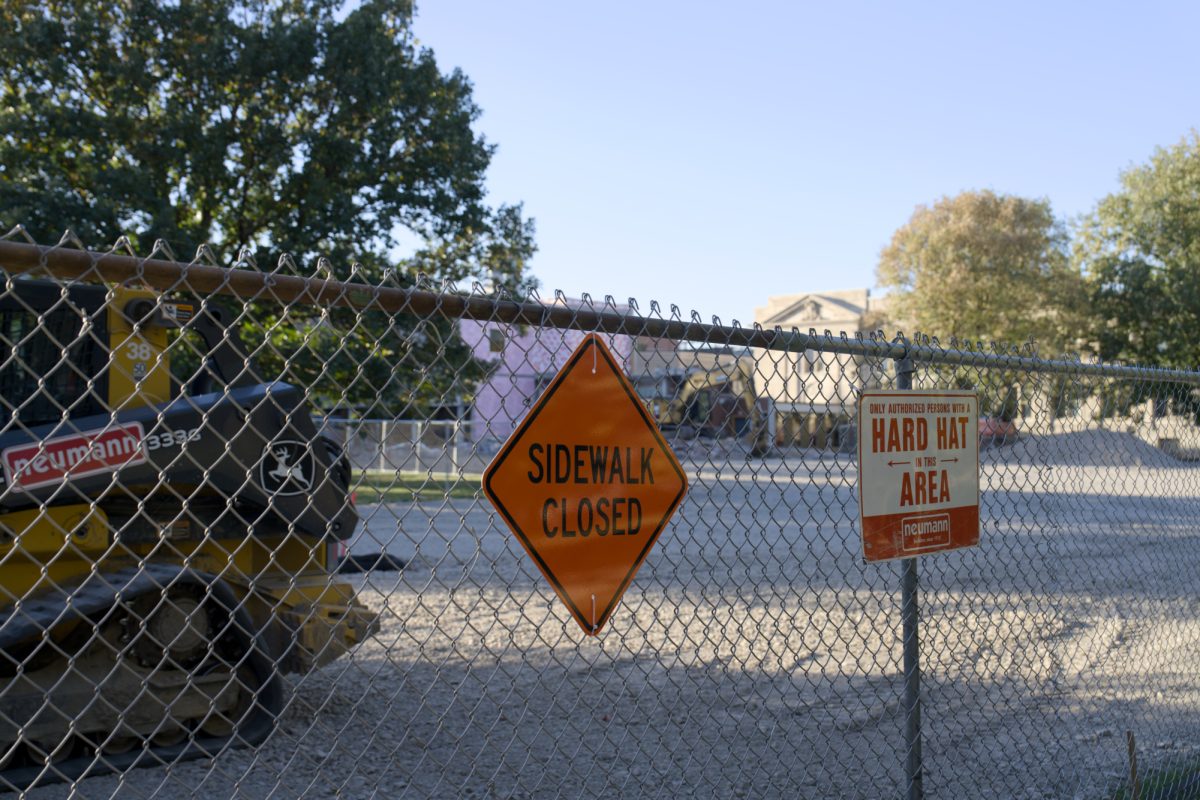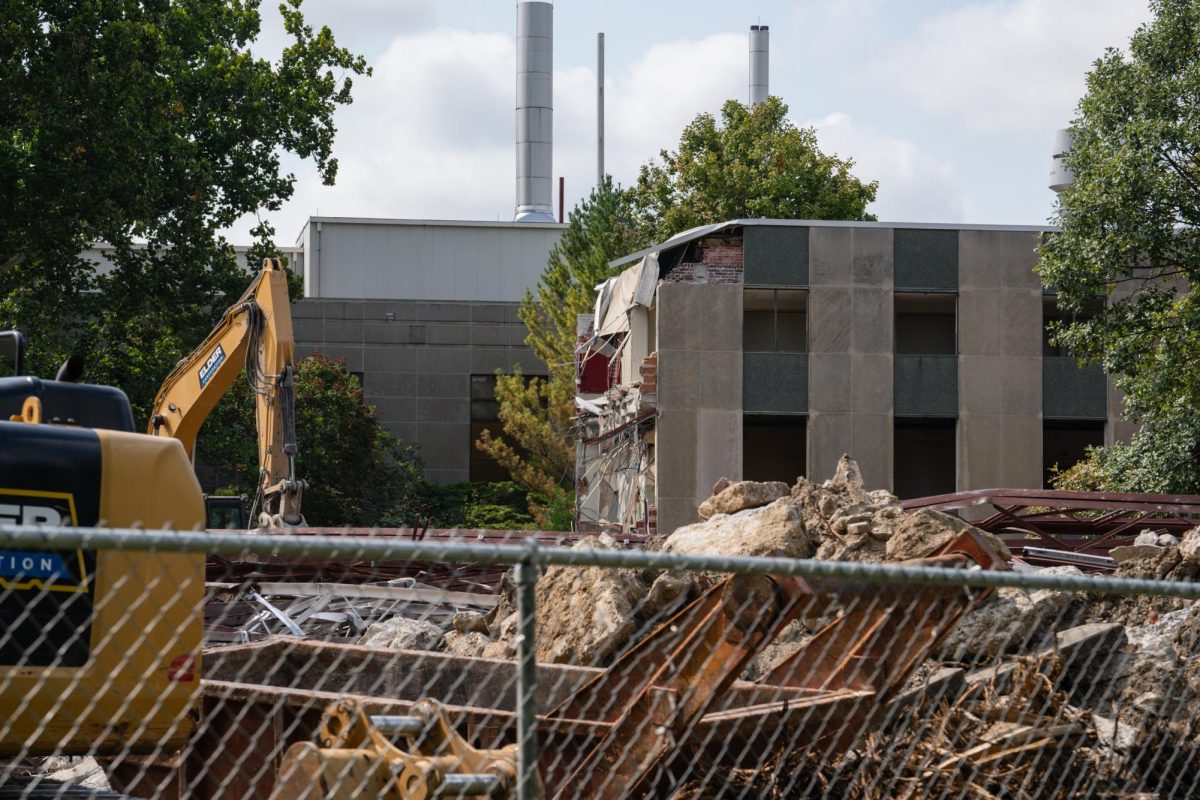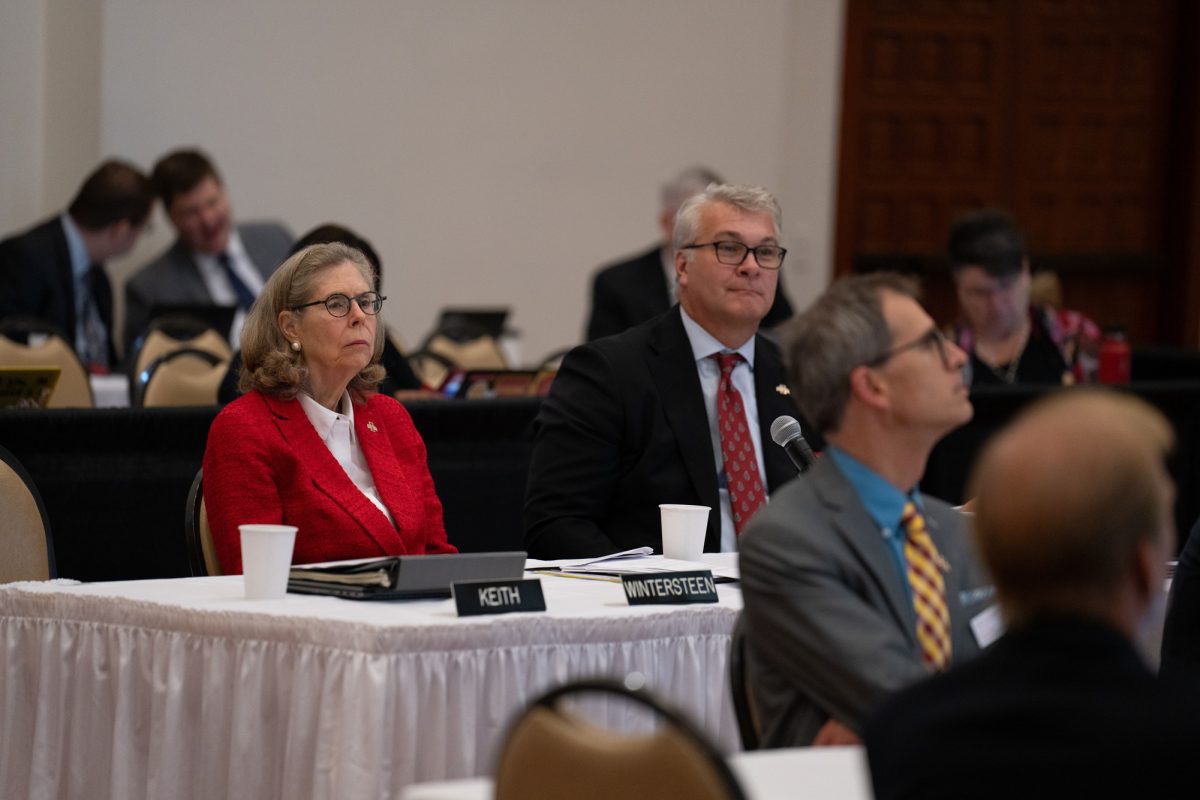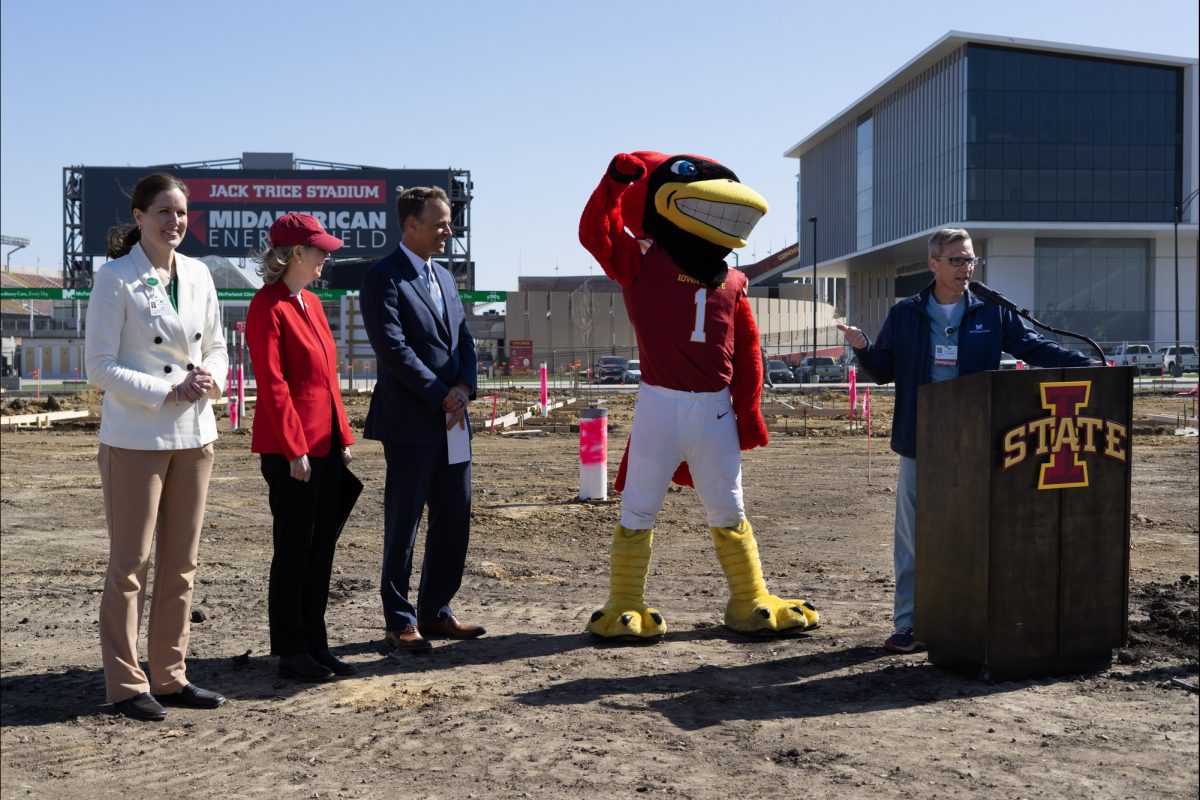LeBaron Hall’s demolition phase is nearly done, but with new construction expected to be completed in 2026, Iowa State seeks to minimize the impact to students during the process.
According to the Daily’s previous reporting, the $39 million LeBaron construction project will build “contemporary learning environments that encourage independent learning and leadership development.”
According to Bart Dobson, a construction manager at Facilities Planning and Management, the project is currently 95% of the way through its demolition phase and is still on schedule for completion.
Dobson said the closures of sidewalks near the construction site on central campus will remain in place through the remainder of the project with temporary exceptions.
“There will probably be a few more sidewalk closures on the west side of [the Human Nutritional Sciences Building] because we have to reconfigure the sidewalk and bike parking because of fire truck access,” Dobson said.
Safety of pedestrian traffic has been a concern during the course of the project, according to Liz Clarke, a project manager at Facilities Planning and Management.
“There was a lot of discussion of how we could minimize impact for pedestrian routes,” Clarke said. “There’s so many crosswalks, so many possible collision points. So that’s mainly why at that section of Morrill we have [the construction traffic] coming in on the north side of the fence.”
Clarke said that the in-place CyRide route changes will also remain through the completion of the project.
According to previous reporting by the Daily, “23 Orange route will be rerouted, no longer stopping at Parks Library East or Beardshear Hall. Instead, the route will utilize Bissell Road for stops at Howe Hall, Upper Friley and Lake LaVerne North before continuing on its normal route at Memorial Union North.”
Bike traffic will be able to continue using Morrill Road, according to Clarke.
“They still use Morrill Road for the bike path,” Clarke said. “We still have a pathway.”
According to previous reporting by the Daily, “students and staff will need to walk their bikes in what the university calls a “bicycle detour (dismount zone) located on the west side of Morrill Road west of the construction site.’”
Noise has been another concern of the project, especially in limiting its detriment to students, according to Dobson.
“We’ve been in communication with the departments that are still in HNSB, and just let them know what our schedule is and to let us know if there are any disturbances,” Dobson said. “There’s been no problems we’ve heard from professors that have lectures in the auditorium. So we’ve just been keeping in touch with all parties, and so far, it’s been going very well.”
Clarke said that the bulk of the noise from construction comes from the demolition, which is nearly finished.
According to Clarke, measures have also been taken to reduce noise during the most intense parts of the academic year.
“We do have in the contracts on any of our construction projects, no noisy work during prep week and finals week so we’re not having any disruptions for the students, faculty and staff on campus during those times,” Clarke said.
With the dry season Iowa is experiencing, dust is another concern that the construction team has been working to mitigate, according to Dobson.
“You can imagine the amount of dust that is created,” Dobson said. “They do have a water truck out there just to keep the dust under control. Otherwise, that would blow out into the sidewalks and students.”
According to Clarke, constant communication with the College of Health and Human Sciences, which primarily uses the buildings in the affected area, has aided in minimizing the impact on students.
“We have weekly check-ins with them, just so they know what to anticipate and be able to communicate back to their end of things,” Clarke said.
The construction of the new building, still to be named LeBaron Hall, will not include demolition of the LeBaron auditorium or the connector area to the surrounding buildings, according to Clarke.
“The new facility is going to be such a benefit for the students,” Clarke said. “It’s just going to be a much nicer space when it’s all said and done. A lot of great daylight. It’s just going to be a much healthier building for everybody.”















